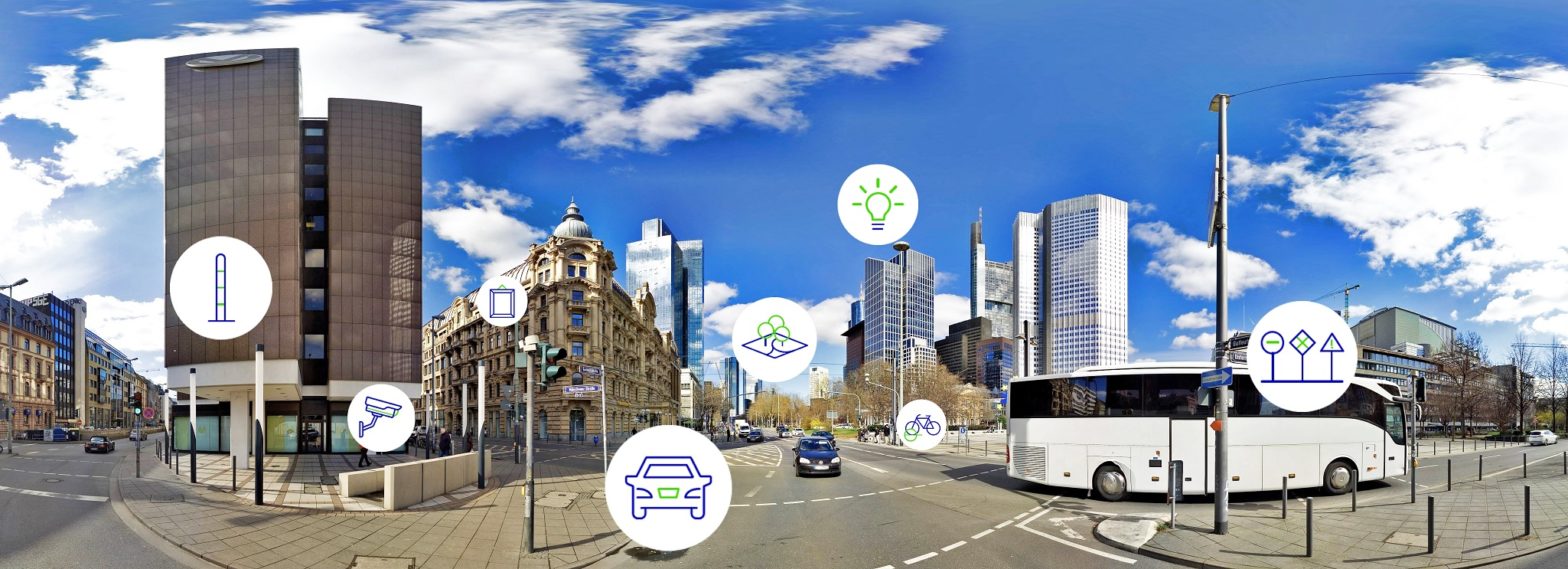
Smarter and greener: How cities are using technology to fight climate change
13 April 2022
We all know that governments and organisations around the world are taking big steps to combat the effects of climate change. But some of the most important actions we can do in that battle are taking place at a much more local level.
The world population is increasing all the time, and a bigger proportion of people are living in cities. Because of this, cities are responsible for large amounts of the carbon emissions generated worldwide: according to recent reports, as much as 75 percent. This means that everything cities can do to limit their environmental impact will have a significant benefit – and in the digitally powered world we all live in, technology is playing a big part.
In this article, we’ll look at three of the most creative uses of technology in reducing emissions, engaging public interest in greener life, and making better use of urban environments.
New York City’s Street Tree Map
The direct benefit of reducing emissions is important, but sometimes it can be just as beneficial to get people interested in sustainability and encourage them to adopt more eco-friendly ways of living.
This is exactly what New York City has achieved with its online Street Tree Map, created with the help of smart visual data from Cyclomedia. It is the most detailed and accurate map of a city’s trees anywhere in the world, and is operated by NYC Parks. At the time of writing, nearly 690,000 trees have been added to the map, which users can then follow and favourite. Every single tree has its own entry on the map and its own data around stormwater interception, energy conservation, and CO2 and pollutant reduction.
All this data is translated into overall city-wide savings, both on ecological and financial levels, calculated using formulae from the U.S. Forest Service. It is currently estimated that New York City’s trees are saving around 650,000kWh of energy a year. They are also saving more than 1.1 billion tons of CO2, and making financial savings of more than US$100million.

CO2-free Copenhagen
Scandinavia already has a reputation worldwide for clean, natural, ecological living. The Danish capital Copenhagen is pushing that even further. It is aiming to become the world’s first carbon-neutral city as early as 2025. This ambition is being pursued through many different initiatives, not least the Danes’ enthusiasm for cycling around their helpfully flat city: almost half of all journeys made in Copenhagen are by bike.
Addressing the energy demands of the city is also a major part of the drive, symbolised by the Amager Bakke power plant that dominates the city’s skyline. Opened in 2017, it’s designed to convert waste produced by more than half a million people and 46,000 businesses into energy, providing heat and power from a cleaner, renewable source. And the plant helps citizens and tourists burn their energy, too: the building has its own hiking trail, climbing wall, and even an artificial ski slope down its angled roof.
Smarter parking in Frankfurt
To deal with the effects of climate change, the city authorities in Frankfurt-am-Main, Germany, have been exploring new ways to invest in smart mobility and run their road network and related services more efficiently, which saves people time and reduces carbon emissions. They have deployed Cyclomedia’s smart visual data tools to uncover detailed insights on how different facilities are used, and how changes can be made to encourage greener behaviour.
As well as using visual data for traffic management on 2,300km of roads, Frankfurt has put this information to good use through a more creative approach to parking management. With detailed data analytics on areas where parking is free, where it is cheap or where special restrictions apply (e.g. resident-only areas), the city could understand how to change parking policy to move traffic out of the city.
The result is the creation of cheaper parking areas outside of the centre, with a resulting increase of people using public transport to complete their journey into the city. The changes help to make the city greener and to reduce city traffic, along with carbon emissions.
Learn more about how your city can use technology and visual data to become greener and more sustainable. Read our guide to creating a green city today.




